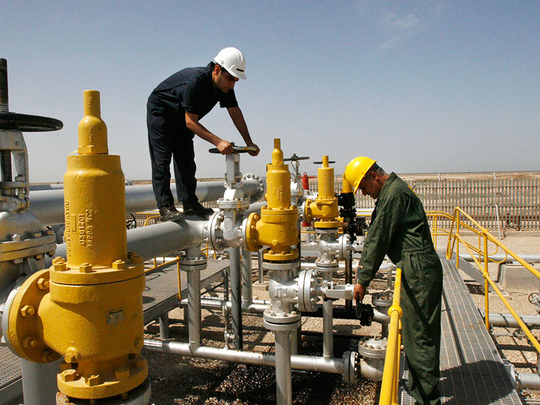
New York: Oil in New York headed for its longest run of losses since February as traders were rattled by Opec plans to restore output, while the spread with benchmark Brent widened.
Futures slid 1 per cent in New York after Friday’s 4 per cent decline. There was no settlement Monday for West Texas Intermediate because of the US Memorial Day holiday. That decline came as Saudi Arabia and Russia said the Organisation of Petroleum Exporting Countries and its partners may boost supply to make up for potential losses from other members, most notably Venezuela and Iran.
WTI for July delivery fell as much as 3.1 per cent to $65.80 a barrel and traded at $66.96 on the New York Mercantile Exchange as of 2:45pm in London. Futures are headed for a fifth straight session of declines, the longest such stretch since Feb. 9.
Brent futures for July settlement rose 0.7 per cent to $75.82 a barrel on the London-based ICE Futures Europe exchange, after dropping $1.14 on Monday. The global benchmark’s premium to WTI rose to as high as $9.04 on Tuesday.
US President Donald Trump’s decision to reimpose sanctions on Iran and Venezuela’s slumping output drove oil to the highest level in more than three years earlier this month, prompting complaints from consuming nations like India about higher costs. That rally ended as Opec and its allies committed to boosting supply, while logistical constraints at Cushing — the Oklahoma hub where contracts are settled — weighed further on WTI.
“They can’t move the product fast enough out of Cushing, so whenever Brent moves, WTI moves a little less,” said Michael Poulsen, an analyst at Global Risk Management Ltd. “There are no major limitations on Brent.”
Prices slide
Meanwhile, explorers in the US added 15 oil rigs last week, taking the total to 859, the highest in more than three years, and adding to bearish signals for the market.
“We had a surprise rise in the rig count after a period where there’s been some speculation about bottlenecks in US production limiting the prospect of further output increases,” said Jens Naervig Pedersen, a senior analyst at Danske Bank A/S in Copenhagen.












